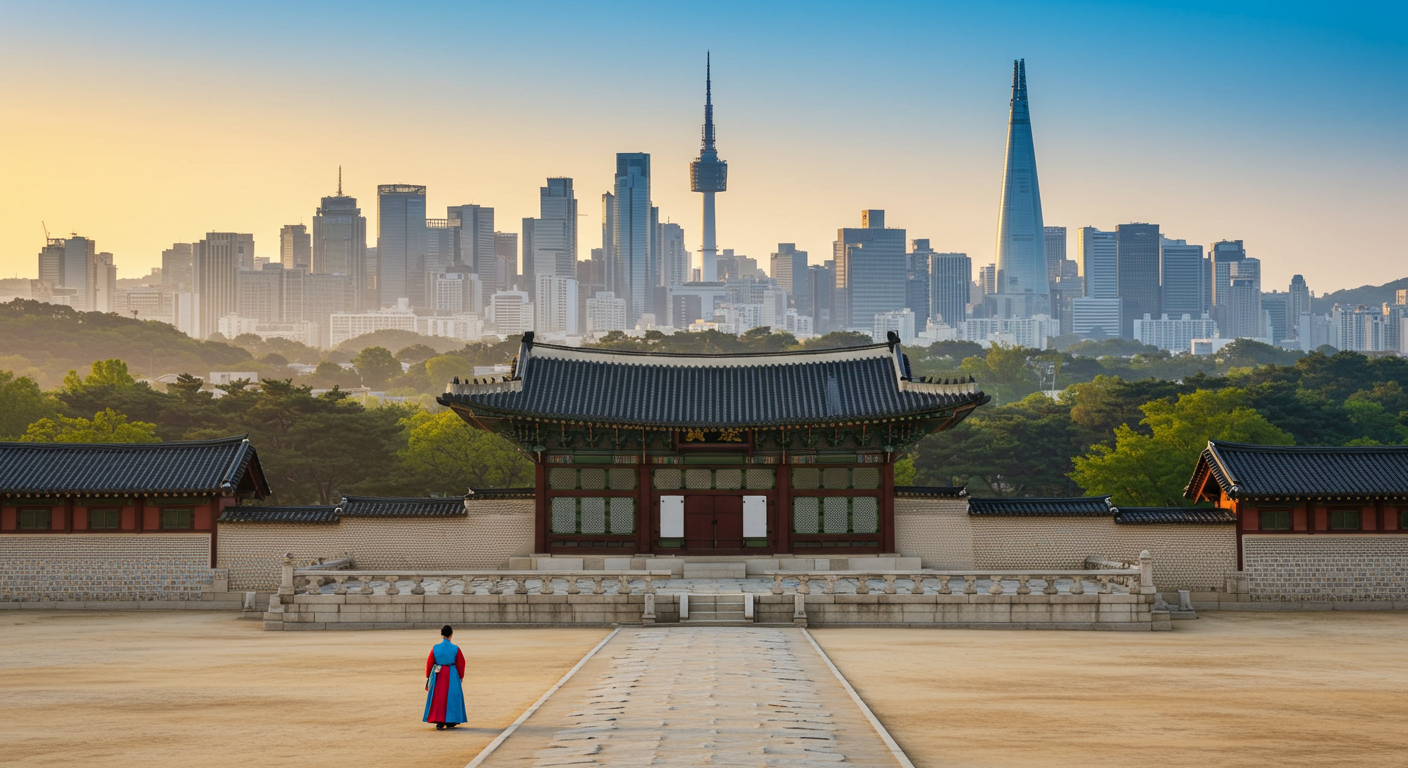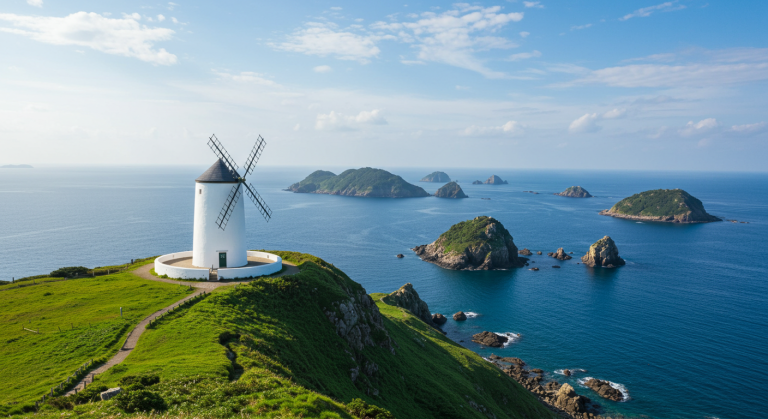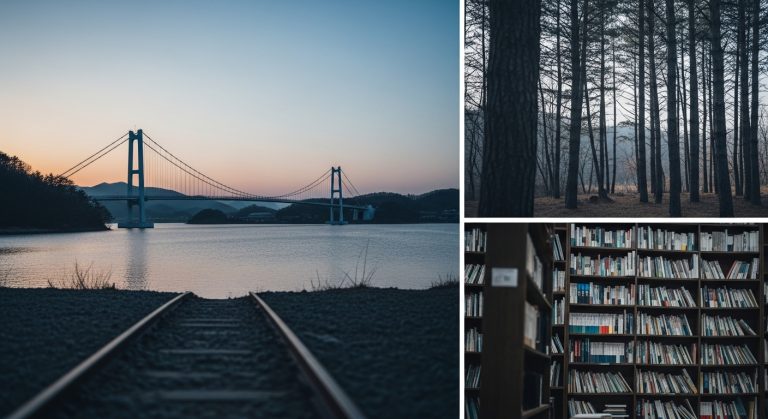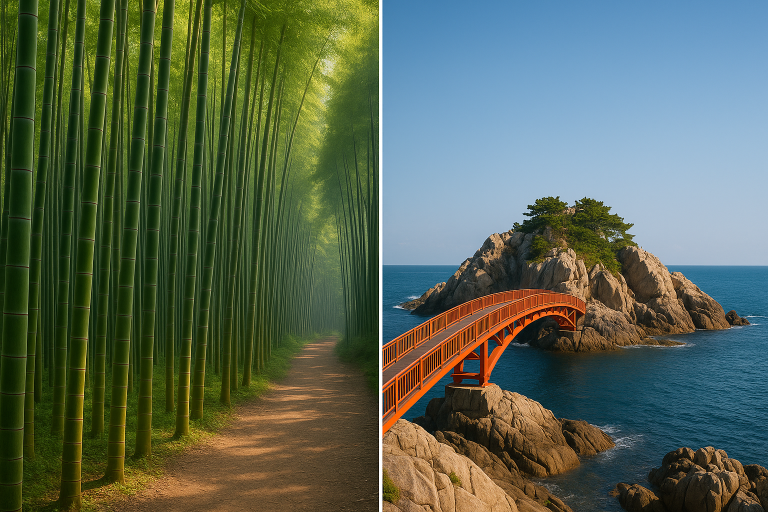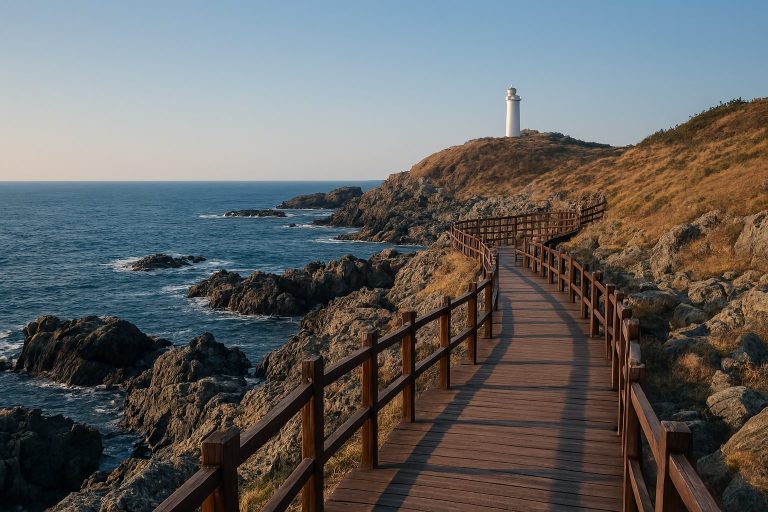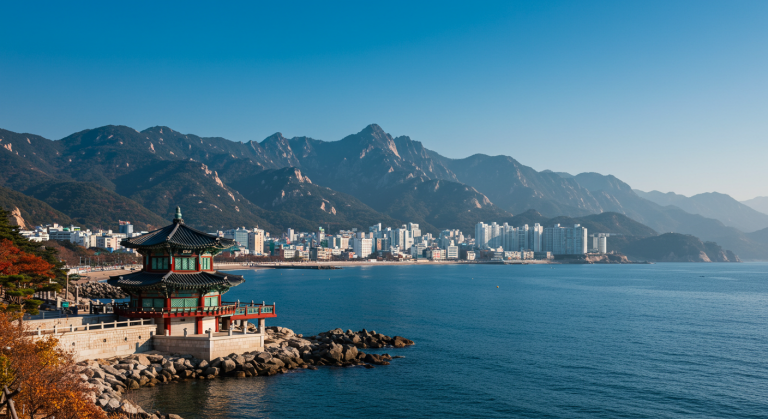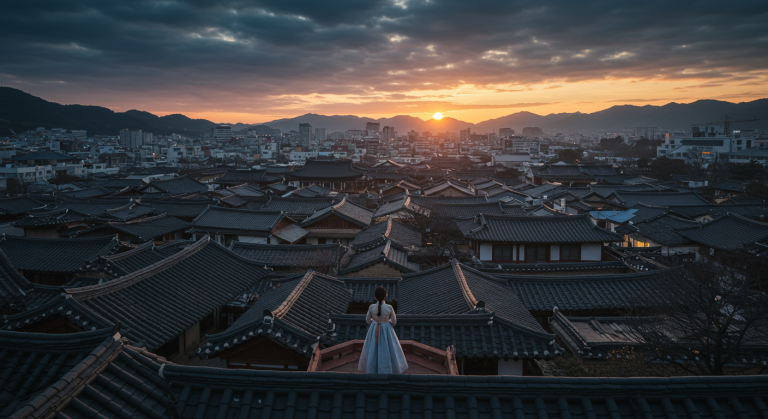Planning Your Trip to Gwangju: Where to Eat, Stay, and Explore Korea’s Cultural Capital

Have you ever felt that nagging desire for a travel destination that offers more than just pretty photos?
I’m talking about a place with a deep, tangible history, a thriving local art scene, and a reputation for having the absolute best food in the entire country.
For me, that search ended when I finally visited **Gwangju (광주)**, the sixth-largest city in South Korea and the unquestionable capital of the Jeolla region.
Known locally as *Bitgoeul* (City of Light), Gwangju is a dynamic blend of somber historical reflection and dazzling contemporary culture.
We often focus on Seoul’s neon pulse or Busan’s coastal charm, but Gwangju holds the *soul* of Korea—the grit that forged its democracy and the culinary tradition that feeds its people.
Trust me, this city offers a richer, more authentic Korean experience than you might find anywhere else.
In this incredibly detailed guide, I’m going to take you through Gwangju’s must-see spots, explain its profound historical context, and, most importantly, tell you exactly what and where to eat!
Get ready for a journey that engages your mind, your heart, and your stomach. Let’s dive in! 🚀
Part 1: The Historical Foundation: Democracy and Resilience 🇰🇷
You simply cannot talk about Gwangju without acknowledging its vital role in the struggle for South Korean democracy.
The events of May 1980, known as the **Gwangju Democratic Uprising** (or 5·18, for May 18th), cemented the city’s identity as a beacon of resistance and human rights.
Walking the streets here isn’t just sightseeing; it’s a profound history lesson.
I felt a deep sense of respect and somber reflection as I visited the sites that were once the battlegrounds for freedom.
**The 5·18 National Cemetery: A Sacred Space**
The National Cemetery is the final resting place for hundreds of victims of the 1980 movement.
The entrance, marked by the imposing **Democratization Gate**, sets a powerful and respectful tone immediately.
The site is huge, and you can spend hours visiting the memorial tower, the rows of graves, and the **5·18 Memorial Hall**.
The hall features incredibly moving exhibits, including photos, personal belongings, and firsthand accounts that paint a vivid picture of the uprising.
To truly appreciate Gwangju, try to visit the cemetery first. It provides the crucial historical lens through which you can view the rest of the city, especially its art and independent spirit. The sacrifice made here directly fuels the city’s cultural energy today.
**Asia Culture Center (ACC): A Monument of Modernity and Memory**
The ACC is the architectural heart of modern Gwangju, but it’s built on the site of the former Jeollanam-do Provincial Office, which was the final stand for the protestors in 1980.
The decision to build a massive, sprawling cultural complex here is a powerful statement about transforming pain into progress and art.
It is one of Asia’s largest cultural facilities, mostly built **underground** to preserve the surrounding historical streetscape and respect the solemnity of the ground.
I was absolutely fascinated by the design; it’s a subterranean world filled with theaters, libraries, and exhibition spaces dedicated to fostering cultural exchange across Asia.
**Geumnam-ro: The Street of History**
The broad boulevard of **Geumnam-ro** runs right past the ACC and is known as the central area of the 1980 demonstrations.
Today, it’s a bustling commercial district, but you can feel the echoes of history beneath the pavement.
Taking a walk down Geumnam-ro from the ACC toward Chungjang-ro connects Gwangju’s past with its present.
It’s a great way to transition from historical reflection to modern exploration, often marked by plaques and small memorials along the way.
Part 2: Gwangju’s Creative Heart: Art, Heritage, and Charm 🎨
Gwangju is an official UNESCO City of Media Arts, and its cultural pulse is incredibly strong.
The city is dedicated to supporting artists, leading to fascinating art villages and unique cultural preservation efforts.
**Yangnim-dong: The Melting Pot of History**
Yangnim-dong is actually two amazing places in one.
It’s famously home to the quirky **Penguin Village**, but it’s also Gwangju’s **Modern History Street**.
The **Penguin Village** gets its name because the elderly residents walk slowly, like penguins.
It’s an incredibly imaginative urban renewal project where discarded objects and folk art—not just penguin figures—are used to transform a decaying neighborhood into a vibrant, community-created gallery. It’s colorful, nostalgic, and a must-see! 🐧
**The Modern History Street Connection**
Right next to the colorful street art are the beautiful houses and churches of **missionaries** who settled here in the early 20th century.
Walking this street gives you a look at Gwangju’s Western-influenced past, including sites like the **House of Missionary Owen** and the charming traditional Yangnim Church.
**Daein Art Market: Transformation by Night**
Daein Market is the best example of Gwangju’s commitment to art integration.
Most weekdays, it operates as a standard, old-school Korean *shijang* (market) with vendors selling produce and staples.
But on select weekend evenings (check the schedule!), the market completely transforms into a lively **Art Night Market** and food festival.
Artists set up temporary galleries, musicians perform, and food stalls offer innovative twists on traditional Korean street food. It’s an atmospheric and delicious cultural event all in one package! 🧑🎨
Part 3: The Culinary Crown Jewel: Jeolla Cuisine 🍚
If Gwangju is the cultural capital, it is absolutely the **undisputed culinary capital** of South Korea.
The Jeolla region’s fertile land and proximity to the sea mean the ingredients are simply fresher, more diverse, and more abundant.
The difference is immediately noticeable, especially in the sheer quantity and quality of the *banchan* (side dishes) that accompany almost every meal.
Prepare for your table to be completely covered—it’s an experience I won’t soon forget! 😋
**Tteokgalbi & Songjeong Street: The King of Meats**
You haven’t truly eaten Gwangju until you’ve had **Tteokgalbi**.
This dish takes finely minced beef (and sometimes pork), seasons it perfectly, and grills it into tender patties, often served on a hot plate or grill.
The tradition is centered on **Songjeong Tteokgalbi Street**, a small alley lined with famous, multi-generational restaurants.
Don’t be surprised when your meal comes with a complimentary, delicious bowl of **bone broth soup (Galbitang)** and a dozen side dishes. It’s a culinary hug! 🤗
**Hanjeongsik: The Grand Feast of the South**
For the ultimate Jeolla experience, seek out a **Gwangju Hanjeongsik** restaurant.
*Hanjeongsik* means “Korean fixed-course meal,” but in Gwangju, it means an overwhelming, delightful array of at least 20 to 30 different seasonal dishes that fill the entire table.
From raw fermented fish (hongeo, if you dare!) to fresh seafood, stews, roasted meats, and elaborate vegetable preparations, it’s a showcase of the region’s agricultural and fishing wealth.
It’s a sensory overload, but in the best way possible. Bring friends, because you won’t finish it alone!
**Culinary Case Study: The Banchan Philosophy**
1) **Generosity is Key:** Unlike Seoul, where banchan often comes with small refills, Gwangju restaurants typically serve vast quantities upfront, reflecting the region’s abundance.
My recent Hanjeongsik included freshly grilled fish, spicy raw crab (*gejang*), and an entire section of fermented vegetable *kimchi* varieties I’d never seen before.
2) **Quality Over Quantity:** It’s not just the amount; it’s the freshness.
Local greens (*namul*) are often foraged from nearby Mudeungsan, and the *kimchi* reflects a deeper fermentation technique, giving it a rich, complex flavor that defines the Jeolla style.
→ **Takeaway:** Always save room for the **rice (bap)** and **soup (guk)**, which are considered the anchors that bring all the diverse banchan flavors into harmony. Don’t skip the barley rice (*Kkongbori Bap*) street stalls near Gwangju Station for a simpler, yet equally satisfying, traditional meal.
Part 4: Urban Exploration: Youth, Fashion, and Cafés 🛍️☕
While Gwangju embraces its heritage, it’s far from stuck in the past.
The city is buzzing with modern energy, trendy neighborhoods, and some truly beautiful, design-focused cafés.
**Chungjang-ro: The Fashion Hub**
Chungjang-ro is Gwangju’s equivalent of Seoul’s Myeongdong or Hongdae—it’s the main shopping and entertainment district.
You’ll find everything from global brand flagship stores to local streetwear boutiques and colorful cosmetic shops here.
It’s the perfect place to experience the city’s youthful vibe, grab some Korean snacks, and see the latest fashion trends.
The area also has numerous **movie theaters and arcades**, making it a great destination for a rainy day.
**Dongmyeong-dong: The Hipster Café Street**
Tucked away near the Asia Culture Center is Dongmyeong-dong, a rapidly gentrifying area known for its beautiful, renovated houses turned into chic cafés, bakeries, and unique restaurants.
It’s where the city’s young creatives go to relax and socialize.
I absolutely loved wandering through the quiet, tree-lined streets here.
The architecture, often a blend of traditional Korean and modern minimalist design, provides an excellent backdrop for that perfect cup of coffee. Don’t miss the independent bookstores and small craft shops!
Part 5: Natural Retreats: Mudeungsan and City Views 🏞️
Gwangju is blessed with a majestic backdrop: **Mudeungsan National Park**.
This granite mountain isn’t just a scenic view; it’s the city’s green lung and a spiritual centerpiece.
**Mudeungsan National Park: Peak Experiences**
The park is famous for its unique rock pillars, specifically the **Ipseokdae** and **Seoseokdae** formations, which look like colossal stone screens rising from the mountainside.
These columns were formed by volcanic activity and are breathtakingly beautiful, especially when dusted with snow in winter.
The trails are very well-maintained, and while reaching the highest peaks requires some effort, you can find many accessible loops.
If you’re a nature lover, plan a full day here; the view from the top overlooking the entire Jeolla region is unparalleled. Plus, the mountain provides many of the fresh vegetables found in the local cuisine!
**Sajik Park & Observatory: The Best City Sunset**
For a quicker nature fix and the best panoramic view of the city, head to **Sajik Park**.
The park is home to a modern observation tower that provides stunning 360-degree vistas.
I recommend going just before sunset.
Watching the sun dip behind the skyscrapers and the neon signs of Chungjang-ro light up is a magical experience that perfectly captures Gwangju’s contrast between its calm nature and vibrant urban life.
The true summit, Cheonwangbong, is often restricted as it houses military facilities. Be sure to check which areas are open to the public before planning a high-altitude hike. The **Seoseokdae** and **Ipseokdae** views, however, are almost always accessible and offer the most dramatic scenery.
Part 6: Practical Planning & Logistics ✈️🚌
Gwangju is easily reachable from almost anywhere in Korea, making it a perfect destination for a long weekend trip.
Here is a breakdown of how to get there and where to stay for maximum convenience.
**Transportation: KTX vs. Express Bus**
| Criteria | KTX (High-Speed Rail) | Express Bus |
|---|---|---|
| Travel Time (From Seoul) | Approx. 1 hour 45 min | Approx. 3 hours 30 min |
| Cost | Higher (e.g., ~$45 USD) | Lower (e.g., ~$25 USD) |
| Station Location | Gwangju Songjeong Station (West side) | U-Square Bus Terminal (Central) |
| Recommendation | Best for Day Trips & Speed | Best for Budget & Central Access |
Once you’re in Gwangju, the subway system (one line!) is super easy to navigate, and the public buses are efficient.
A T-Money card (used across Korea) works seamlessly here.
Taxis and ride-sharing apps are also readily available, particularly near the major hubs like U-Square and Chungjang-ro.
**Where to Stay: Accommodation Guide**
- **For Convenience (U-Square/Seo-gu):** Staying near the **U-Square Bus Terminal** area is fantastic if you plan on using the express bus or exploring the city center quickly. It offers the most major hotels and shopping centers.
- **For Culture & Nightlife (Dong-gu):** Look for accommodation near the **ACC** or **Chungjang-ro**. This puts you in the heart of the action, close to the history sites, art markets, and the trendy Dongmyeong-dong café scene. This is my personal favorite area!
- **For Traditional Charm (Yangnim-dong):** While fewer options exist, staying in a small guesthouse or Hanok-style stay in or near **Yangnim-dong** offers a quieter, more historical atmosphere.
Bonus: Your Customized 3-Day Gwangju Itinerary Builder 📅
To help you visualize your trip, here is a flexible 3-day itinerary.
Use this as a foundation and adjust based on your personal interests—whether you’re a history buff, an art lover, or, like me, primarily interested in food!
Day-by-Day Focus Areas
DAY 1: History & Art
ACC (Morning) → Geumnam-ro → Yangnim-dong (Penguin Village/History Street) → Sajik Park Sunset.
DAY 2: Cuisine & Culture
Chungjang-ro Shopping → Dongmyeong-dong Café Lunch → Dinner at Songjeong Tteokgalbi Street → Daein Art Market (Evening).
DAY 3: Nature & Reflection
Mudeungsan Hike (Ipseokdae) → Lunch (Kkongbori Bap) → 5·18 National Cemetery (Reflection) → Departure.
**Interactive Budget Estimation (Simple)**
Estimate your daily food and entry costs (per person, in USD).
Conclusion: Why Gwangju Will Steal Your Heart ❤️
Gwangju is a city that truly deserves its nickname, the City of Light (*Bitgoeul*).
Its light comes not just from the vibrant art and commercial districts, but from the democratic spirit that refused to be dimmed.
It offers an unparalleled blend of deep historical meaning, dynamic contemporary culture, and, let’s be honest, the finest cuisine in the nation.
It’s a complete travel destination that satisfies every interest, from hiking the majestic Mudeungsan to savoring a monumental Hanjeongsik feast.
If you’re seeking a Korean travel experience that is rich, authentic, and genuinely moving, make Gwangju your next destination.
You’ll leave with more than just souvenirs; you’ll leave with a better understanding of Korean resilience and a lifetime of incredible food memories. Go and discover the heart of Jeolla for yourself! 🗺️
Tell me, which Gwangju dish are you most excited to try first—the **Tteokgalbi** or the overwhelming **Hanjeongsik**? Share your thoughts below!
